Stages in the Buoyancy Process
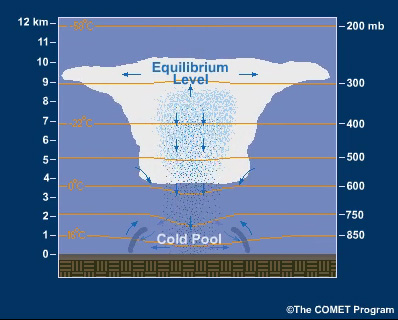
All Stages
The basic processes associated with buoyancy within a convective storm are illustrated in this schematic of the life cycle of an ordinary cell evolving in an environment with no vertical wind shear.
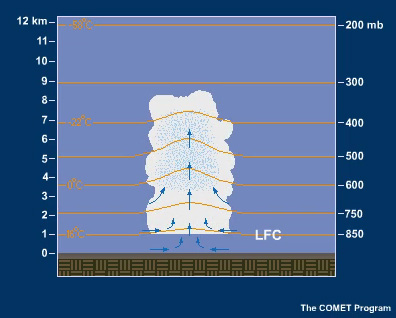
Stage 1
In an unstable environment, once air is lifted to its level of free convection (LFC), it will continue to rise as long as it is warmer than the air around it.
Level of Free Convection (LFC): The height at which a lifted parcel of air would first become warmer (less dense) than the surrounding air. Once the parcel reaches the LFC and becomes less dense than the surrounding air, it continues to rise freely until it becomes as cool (as dense) as the surrounding air. This upper level is the Equilibrium Level (EL).
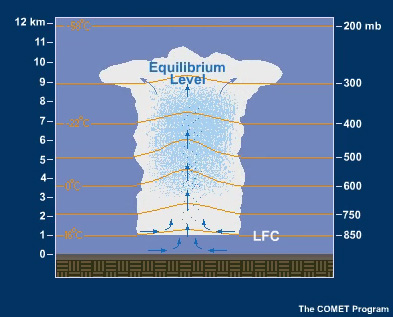
Stage 2
Eventually, the parcel reaches an equilibrium level (EL) at which its temperature equals that of the surrounding environment. Since the parcel carries a certain amount of upward momentum, some additional ascent occurs beyond the EL. This additional rise forms the overshooting top above the anvil. Finally, because the parcels are now cooler than their surrounding environment, they sink back toward the EL. Subsequently, the parcels may oscillate vertically about the EL, dampening with time. As the process repeats, air parcels accumulate at this level and spread laterally, creating the cloud anvil.
While all this is going on, moisture is condensing in the rising updraft air. The weight of the condensed moisture will eventually be too much for the updraft to hold aloft. Subsequently, precipitation will begin to fall back down through the updraft.
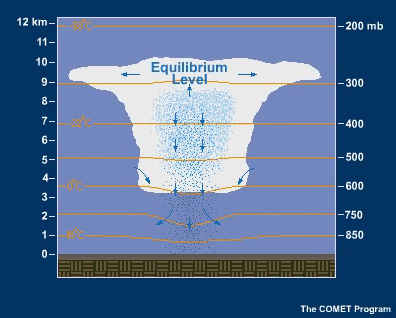
Stage 3
Because precipitation loading can subtract significantly from positive buoyancy, the initial effect of precipitation is to drag air downward, as shown in the animation, and initially, it is the most significant contributor to the strength of a downdraft.
Other process contributing to the cooling of the downdraft include (1) entrainment of drier air at mid-levels and (2) evaporation of rain as it falls below the cloud base. Both of these processes make the downdraft colder than the surrounding air, further enhancing its downward acceleration.
Studies have shown that much of the downdraft air originates from the environmental air entrained at mid-levels in a storm, generally between 3 and 5 km AGL.
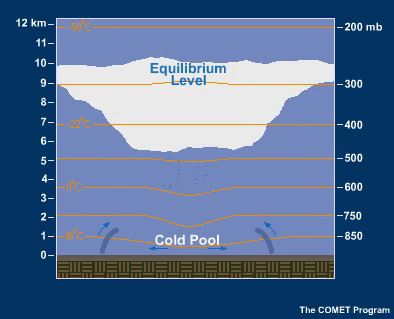
Stage 4
When the downdraft reaches the surface it spreads out, forming the cold pool. The downdraft and spreading cold pool represent the final stages in the life cycle of the cell. At this point, the buoyancy has all become negative.